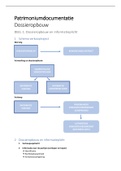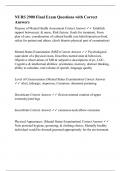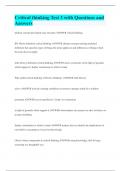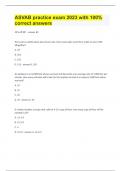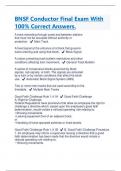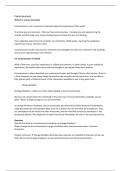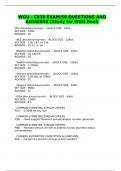Modular products are used to enhance the nutrient profile of a feeding regimen. Which of the following
combinations represents modular products?
1. Safflower oil, protein, glucose and selenium
2. Glucose, glutamine, water and MCT oil
3. Protein, cholecalciferol, fiber and safflower oil
4. MCT oil, glucose, fiber and protein correct answers4. MCT oil, glucose, fiber and protein
Modular products are used to enhance the nutrient profile of a feeding regimen. Which of the following
combinations represents modular products?
1. Safflower oil, protein, glucose and selenium
2. Glucose, glutamine, water and MCT oil
3. Protein, cholecalciferol, fiber and safflower oil
4. MCT oil, glucose, fiber and protein correct answers4. MCT oil, glucose, fiber and protein
Protein powders, carbohydrate powders, fat emulsion, MCT oil, fiber and specific amino acids are
examples of what? correct answersModular products
Protein powders, carbohydrate powders, fat emulsion, MCT oil, fiber and specific amino acids are
examples of what? correct answersModular products
Early initiation of enteral feeding has been suggested to benefit ICU patients by reducing infectious
complications, length of hospital stay and even possibly reducing mortality. Which group of patients
might be at significant risk from early enteral feeding?
1. Cancer patients who underwent surgery of the GIT
2. Patients with increasing vasopressor support
,3. TBI patients with intracranial pressure controlled by hypertonic saline
4. Patients admitted to the hospital with acute on chronic pancreatitis correct answers2. Patients with
increasing vasopressor support
Early initiation of enteral feeding has been suggested to benefit ICU patients by reducing infectious
complications, length of hospital stay and even possibly reducing mortality. Which group of patients
might be at significant risk from early enteral feeding?
1. Cancer patients who underwent surgery of the GIT
2. Patients with increasing vasopressor support
3. TBI patients with intracranial pressure controlled by hypertonic saline
4. Patients admitted to the hospital with acute on chronic pancreatitis correct answers2. Patients with
increasing vasopressor support
What is the risk of feeding a patient before hemodynamic stability has been achieved? correct
answersMay increase the risk of intestinal ischemia as blood perfusion of the gut may be compromised
in a patient who is still requiring high doses of vasopressor drugs to maintain blood pressure
What is the risk of feeding a patient before hemodynamic stability has been achieved? correct
answersMay increase the risk of intestinal ischemia as blood perfusion of the gut may be compromised
in a patient who is still requiring high doses of vasopressor drugs to maintain blood pressure
When should EN be initiated in the hemodynamically unstable patient? correct answersEN should be
delayed until fluid resuscitation is complete
When should EN be initiated in the hemodynamically unstable patient? correct answersEN should be
delayed until fluid resuscitation is complete
A patient with acute respiratory distress syndrome (ARDS) may benefit from a feeding formula
containing supplemental
1. arginine
2. glutamine
,3. nucleic acids
4. omega-3 fatty acids correct answers4. omega-3 fatty acids
A patient with acute respiratory distress syndrome (ARDS) may benefit from a feeding formula
containing supplemental
1. arginine
2. glutamine
3. nucleic acids
4. omega-3 fatty acids correct answers4. omega-3 fatty acids
Define ARDS. correct answersAcute respiratory distress syndrome - inflammatory response leading to
diffuse alveolar damage and lung capillary endothelial injury.
Define ARDS. correct answersAcute respiratory distress syndrome - inflammatory response leading to
diffuse alveolar damage and lung capillary endothelial injury.
Why are formulas containing omega-3 fatty acids recommended in ALI and ARDS? correct
answersInflammatory mediators, including prostaglandins and leukotrienes derived from arachidonic
acid metabolism have been implicated in both ALI and ARDS. Formulas containing omega-3 fatty acids
may down regulate the inflammatory response through the production of less inflammatory
prostaglnadins and leukotrienes
Why are formulas containing omega-3 fatty acids recommended in ALI and ARDS? correct
answersInflammatory mediators, including prostaglandins and leukotrienes derived from arachidonic
acid metabolism have been implicated in both ALI and ARDS. Formulas containing omega-3 fatty acids
may down regulate the inflammatory response through the production of less inflammatory
prostaglnadins and leukotrienes
What is the evidence for use of omega-3 fatty acids in ARDS and ALI? correct answersBased on 3 level 1
studies the Guidelines for the Provision and Assessment of Nutrition Support Therapy in the Adult
Critically Ill Patient in 2009 recommended patients with ARDS and severe ALI be placed on an enteral
formulation characterized by an anti-inflammatory lipid profile. Subsequent to the publication of those
guidelines and recommendations have been studies published in 2011 showing that enteral
, supplementation of omega-3 fatty acids did not result in improved biomarkers of inflammation or clinical
outcomes
What is the evidence for use of omega-3 fatty acids in ARDS and ALI? correct answersBased on 3 level 1
studies the Guidelines for the Provision and Assessment of Nutrition Support Therapy in the Adult
Critically Ill Patient in 2009 recommended patients with ARDS and severe ALI be placed on an enteral
formulation characterized by an anti-inflammatory lipid profile. Subsequent to the publication of those
guidelines and recommendations have been studies published in 2011 showing that enteral
supplementation of omega-3 fatty acids did not result in improved biomarkers of inflammation or clinical
outcomes
The use of enteral nutrition formulas enriched with BCAAs is best used for patients with:
1. cirrhosis
2. hepatic failure
3. liver transplantation
4. refractory encephalopathy correct answers4. refractory encephalopathy
The use of enteral nutrition formulas enriched with BCAAs is best used for patients with:
1. cirrhosis
2. hepatic failure
3. liver transplantation
4. refractory encephalopathy correct answers4. refractory encephalopathy
What is the theory behind use of BCAAs in hepatic encephalopathy? correct answersThere is believed to
be an increased ratio of aromatic amino acids to BCAAs in patients experiencing hepatic encephalopathy.
The decrease in BCAA is suspected to be due to an increased breakdown in BCAA from skeletal muscles
and utilization. The increased levels of AAA generate false neurotransmitters, resulting in hepatic
encephalopathy symptoms.
What is the theory behind use of BCAAs in hepatic encephalopathy? correct answersThere is believed to
be an increased ratio of aromatic amino acids to BCAAs in patients experiencing hepatic encephalopathy.


